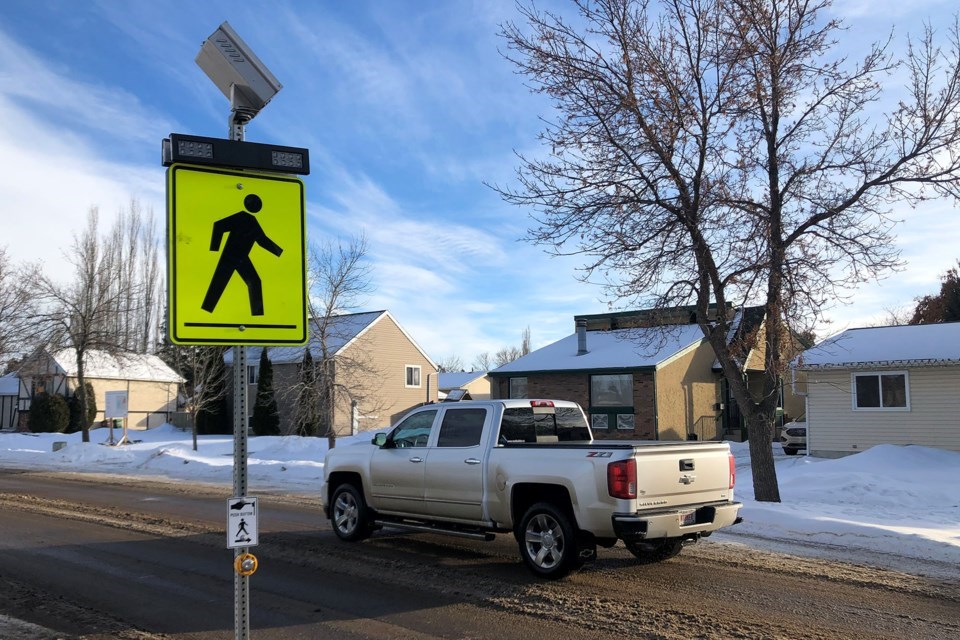Data published by the City of St. Albert show a few roads are becoming increasingly more well-used, but the city's transportation manager warns the data gives an incomplete picture.
Each spring or summer the city completes a traffic count on certain arterial and neighbourhood roads throughout the city using roadside sensor boxes, as well as radar sensors attached to traffic and street lights.
Data from the city's most recent traffic count in 2023, which is available to view and download on the city's Open Data Portal, shows that, compared to previous years, some of St. Albert's arterial roads have seen major jumps in traffic, whereas other arterial and non-arterial roads have seen minimal increases and even decreases in usage.
As seen in the chart above, which includes only a select number of roads that were included in the city's annual traffic count, the amount of daily traffic on Giroux Road in front of Bellerose Composite High School and then on Boudreau Road between Hebert Road and Page Drive in the last two years has seemingly increased significantly when compared to 2019.
In 2019, the city's traffic count tracked some 11,171 vehicles on average daily on Giroux Road passing Bellerose High School, but then in 2022, the number of vehicles skyrocketed by about 75 per cent to 19,581 before dropping down slightly last year to 17,172.
For Boudreau Road between Hebert Road and Page Drive, the city tracked some 22,452 vehicles on an average day in 2019, which then decreased slightly in 2021 to 20,895, before increasing sharply to 27,424 in 2022, or by about 22 per cent compared to 2019. In 2023 there was a further, albeit slight, increase on this section of road again as 27,833 vehicles were considered the daily average.
Dean Schick, the city's manager of transportation, was quick to suggest the traffic increase on Giroux Road was a result of the construction and closure of Villeneuve Road at the time, but for Boudreau Road, Schick suggested the increase could simply be a result of the 2022 traffic count being done at a different time of year than previous counts.
“The first thing I would suggest, though, is that we don't typically want to evaluate one year to the next in terms of data, and the reason for this, of course, is that it can be assured that annually you're going to see some variances in traffic counts and the information collected,” Schick said. “If a count was performed in May one year and then possibly in July in another, it could show a short variance that is explainable through seasonal differences.”
“This is one of the things that we want to try and address; in the past we wouldn't necessarily be collecting information at the same time either from a location and that could influence that change in the volumes.”
Schick said another factor to keep in mind when judging increases or decreases in traffic volume is that each year when the city is doing a traffic count, the equipment is usually only set up in each location for about a week, and only the data collected on Tuesdays, Wednesdays, and Thursdays is used.
“The key is for everyone to recognize these are snapshots in time where what we do with the program is we place the equipment for one week, and to calculate the volume what we typically do is we exclude information from the weekends, Mondays and Fridays,” Schick said. Data from Mondays and Fridays are usually excluded because of the possibility of it being influenced by a long weekend when kids are out of school and many people aren't commuting to work.
“We want to kind of capture as best a snapshot on what would one experience on a typical standard weekday.”
Although there are many methodological factors that prevent too many inferences being drawn from the traffic count data, Schick did say the data can be used to propose possibilities, such as traffic volume is being influenced by population growth and neighbourhood-level traffic patterns.
“Vehicle volumes are reflective of exactly what they are: vehicle volumes and demand on a corridor or on a roadway within the network,” he said. “As can be anticipated, as the city grows and the region grows, vehicle volumes are influenced by that growth.”
Schick said the city is still finalizing which roads and which parts of those roads will be featured in this year's traffic count, and those decisions are usually influenced by locations monitored in previous years, as well as concerns and questions raised by members of the public when it comes to how residential roads are being used.
“We are facing resource implications as well,” he said. “We do what we can with what we have and whether it be equipment, whether it be staffing, we want to make sure that we're kind of applying these in a more strategic and beneficial approach to monitoring our network.”
Traffic count data going back to 2017 can be viewed and downloaded on the city's Open Data Portal, and the data from last year's count is expected to be published sometime this summer.




